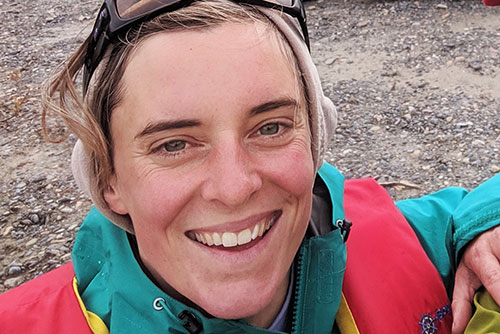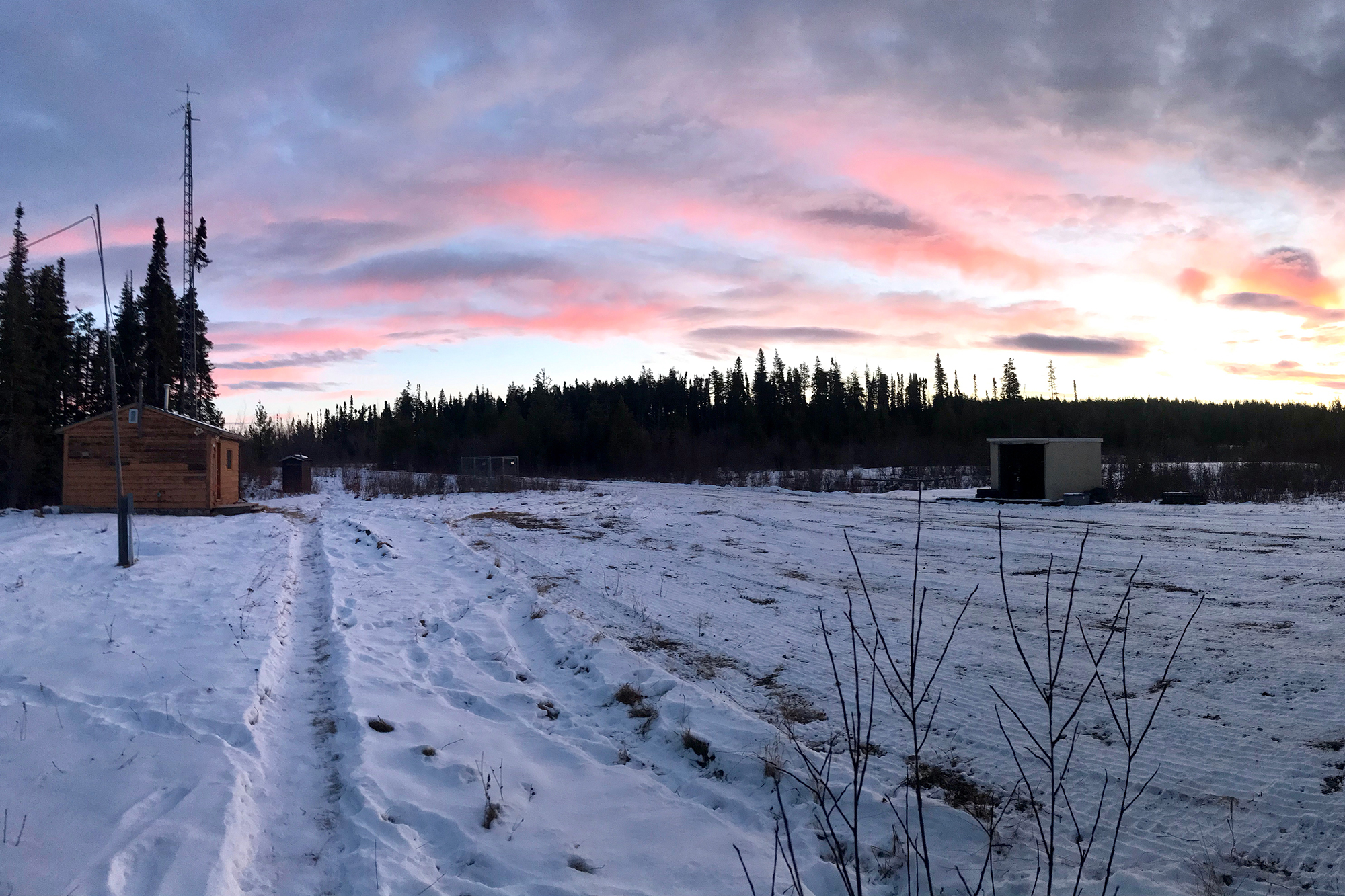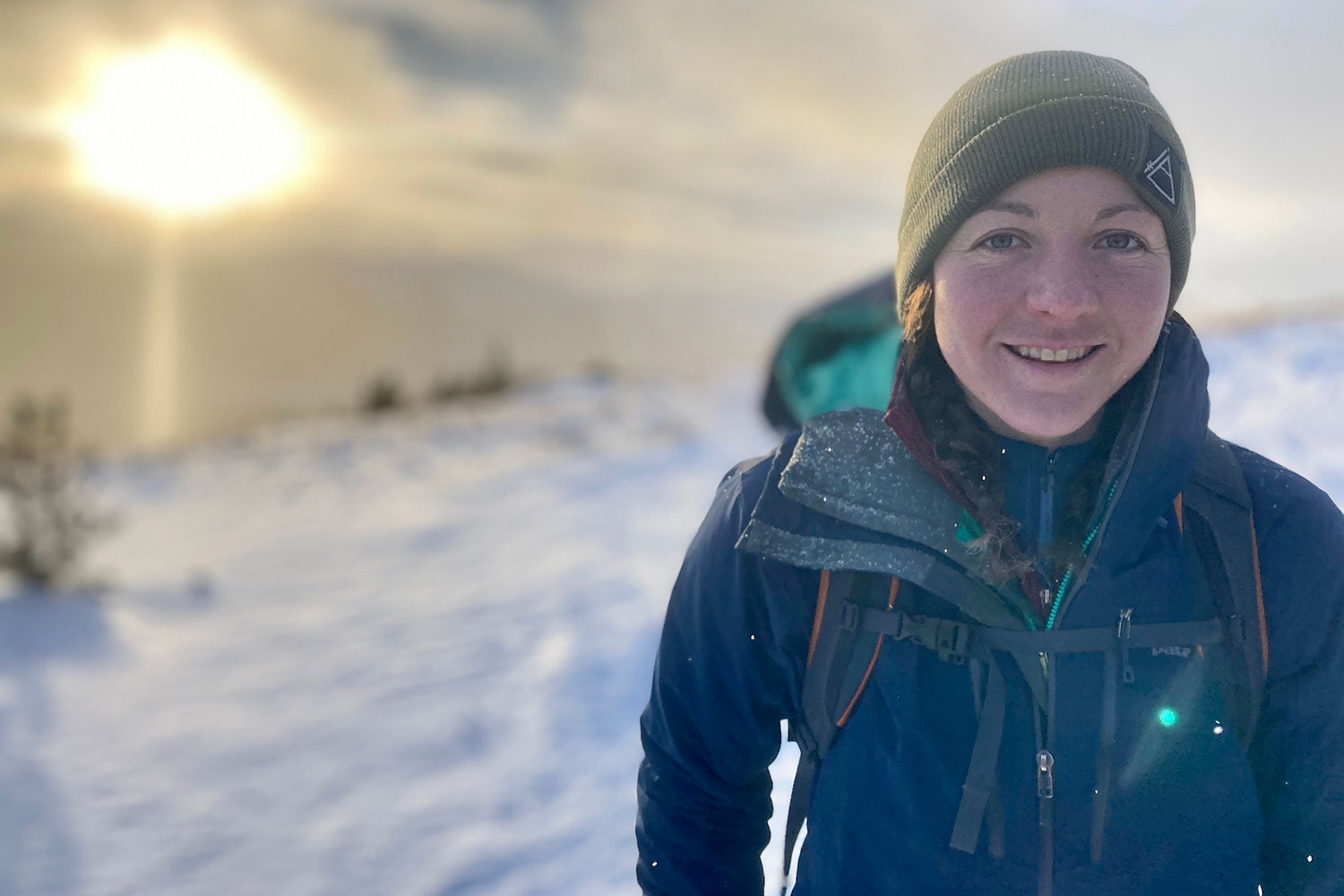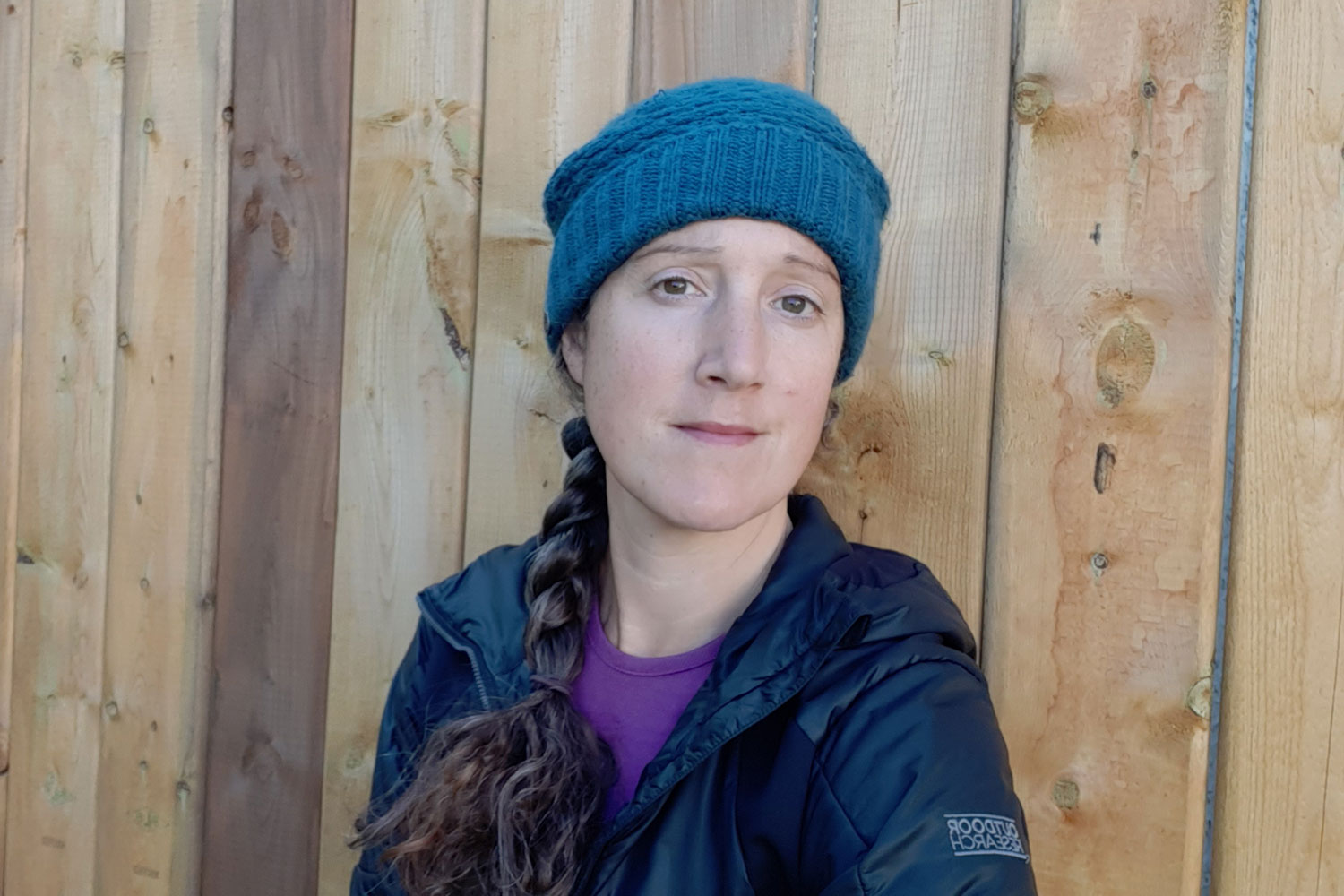
Leonie Brown likes to solve problems. The whole time we talked, she was busily assembling a shelf to store the winter gear that had come back from camp and was currently jumbled on the floors of offices, sea cans, and back rooms.

The crew had just returned from their remote winter camp up northwest of Grande Cache capturing and collaring deer. By all measures, it was a successful campaign. Every GPS collar the Caribou Program owns was walking around the forest, sending back data, and they had done it ahead of schedule. Even with fun, interesting work, a good team, and plenty to celebrate at the end, it wasn’t an easy job.

The camp is a long drive from Hinton, partly on unpaved roads—over three hours in good conditions. And it wasn’t built to be inhabited all four seasons. This problem, too, was Leonie’s to solve. She insulated water and propane lines, installed an on-demand water heater, and earned the MacGyver nickname. She was a good choice because she has been doing research projects out of that camp for just over a decade.

Way back in 2009, Leonie her first summer of many with the Grizzly Bear Program, helping to count up bear food in cutblocks. Since then, she has worked on other grizzly bear projects, but in 2015 the Caribou Program recruited her to survey vegetation on seismic lines in the Chinchaga Wildland far, far to the north.
But last year, Leonie got her first taste of handling wildlife, when the “deer cutblock” project got into gear. In the 2018–2019 season, they went to school on how to build a Clover trap, what kinds of bait food deer find irresistible, and how to actually pin a deer down to collar it. It was a steep learning curve for the whole team, but this diversity of teammates, research questions, and problem solving keeps Leonie coming back year after year.

By the end of the season, they hadn’t quite put out every collar, but they had the process nailed down. An example: at first they tried leaving bait out and after deer had become used to coming back and eating it, they would put the trap over the bait pile. But the deer never really got used to seeing the cage and were too hesitant to go in. Instead, the trick they figured out was to put the bait and the trap out at the same time, a little way apart. Then they slowly moved the bait closer and closer to the trap until finally they put it right inside.

The snow has barely melted off their boots, but the team is looking ahead to organizing camera-trap photos, to analyzing data, to next season and all the unknown challenges that await them. Leonie is ready for them.









